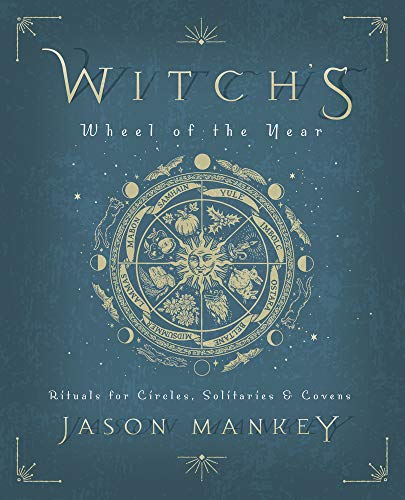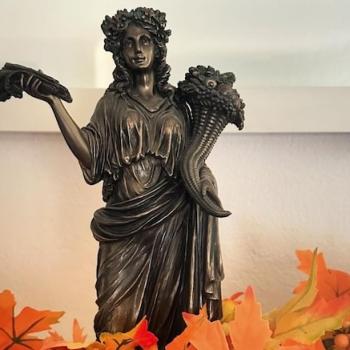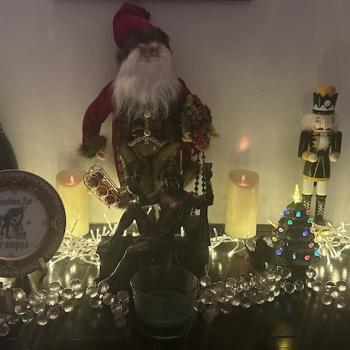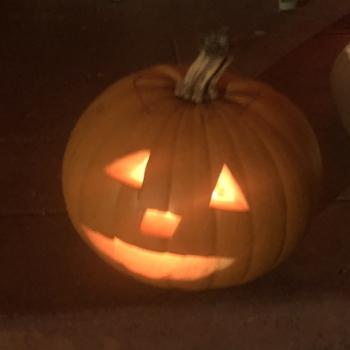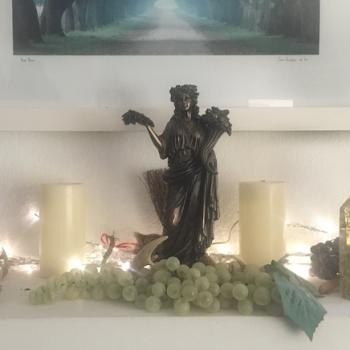OSTARA
Today we celebrate the Spring Equinox. To the ancient Vikings this day was known as Ostara, and named after the goddess Ostara. The name Ostara means “don’t be late,” from the Germanic “os” which means not and “tara” which means “tarry,” the word was a plea for the Spring to hurry up and arrive. The word Ostara was then transferred to the Christian holiday of Easter, where for several generations it was thought to mean “Hurry up Jesus (and come back from the dead we are tired of waiting in front of this cave.)”
It was traditional in Viking households for the oldest son to go out upon Ostara morning and hunt for rabbit. After successfully subduing his prey he would come home with the rabbit and say “I have the Ostara Bunny!” The rabbit would then be dressed up with an ascot around its neck and the children would play games around the bunny’s corpse before it became dinner.
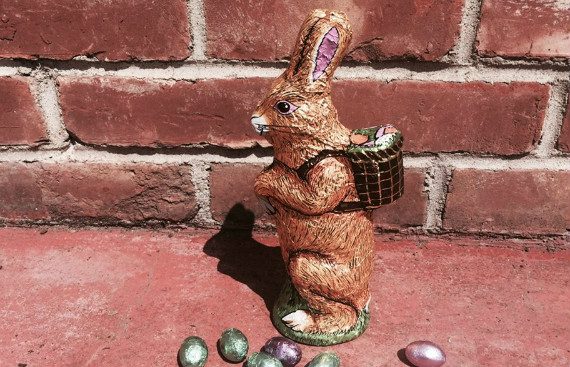
Prior to being roasted, the rabbit would be glazed with chocolate sauce and then set on a bed of grass in a wicker cooking pot. Marshmallows would then be placed around the rabbit as it cooked. The Spring Equinox feast was then served with a variety of jellies. From this tradition we get not only the Easter Bunny, but the tradition of the Easter basket with its chocolate bunnies, marshmallow peeps, and jellybeans.
After dinner the family’s matriarch would dye several dozen eggs a variety of colors and then hide them outside. (This made them easier to find in the dark and the snow.) The children would then rush out of the house to find the eggs and then pelt their brothers and sisters with them as hard as they could. The child who returned with the least amount of yoke on them was the winner, and the child with the most egg on their face was the loser. As a penalty for losing, the most egg splattered child would be forced to clean up Ostara dinner and then boil the remains of the bunny, giving the bones to the winner. This is why children today often get Easter presents.
No matter how you celebrate, I wish you a blessed Ostara.
BELTANE
Beltane is an ancient Celtic-French festival that has been celebrated for thousands of years. The name Beltane comes from the French words “Bel” (Beautiful) and Tane (silver). Beltane was a celebration of Spring, and ancient (and modern) celebrants would head out into the woods on Beltane (May Eve) to have their beautiful love making blessed by the silver moon.
The fairytale “Beauty and the Beast” can be traced directly back to ancient Beltane festivals. This is obvious once you know that Beltane comes from “Bel” (or Belle as it’s spelled in the story today), but the story its self about the goddess of the Spring (Belle) falling in love with the Lord of the Beasts after he’s transformed into human form by the power of the Beltane moon.
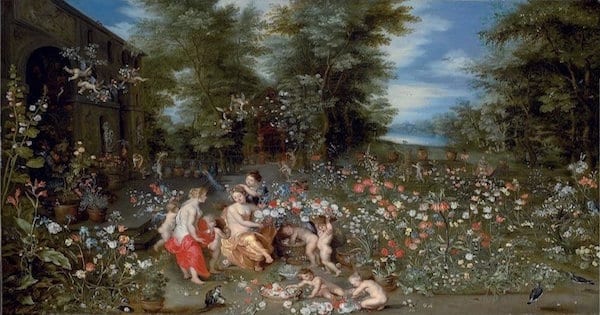
Many Pagans celebrate Beltane today by dancing around a maypole. The original maypole dances were drastically different from the more modern ones involving ribbons. In those days, the maypole was seen as representing the phallus of the Lord of the Beasts (see above) and young women would climb/shimmy up the maypole in the center of town in order to bring fertility in their lives. While sliding down the maypole the young women would yell “Look at me look at me, So fertile shall I be!” The lady who climbed and slid down the poll the fastest was dubbed the “May Queen” in most communities. Curiously this practice still exists in modified form. The “stripper pole” found today in gentleman’s clubs can be traced directly back to this ancient ritual.
The word May for the fifth month of the year is also directly linked to Beltane. For centuries people would ask other questions near the start of what we now call May such as :
“May I kiss your face?”
“May I engage in fornication with you under that tree?”
“May I sexually pleasure you this evening?”
“Maybe you’d be cool with doing things with me?”
Eventually people began to think “May” was simply the month of the year and not a polite way to ask a question, and it’s been with us ever since!
Many Pagans wear crowns of flowers around their heads on Beltane in honor of May Kings and May Queens, but history doesn’t support this idea. Instead most modern scholars think that people wore flowers in their hair on Beltane back in the days of the Old Religion to hide how bad they probably smelled! In addition to its associations with beauty and the moon, Beltane was a time of planting crops-which is hard sweaty work. People wore flowers in their hair to hide their stench, so that someone might consent to couple with them on Beltane night.
No matter how you celebrate, I wish you and yours a blessed Beltane.
LITHA
Litha, the Summer Solstice, has been celebrated since the start of recorded history. Plato mentions the ancient citizens of Atlantis celebrating Litha in his “Dialogues”: “and they danced and celebrated their laws upon the longest day of the year, made merry with the fey, and drank joyously upon Litha.”
“Litha” as a name for the Summer Solstice has been used for thousands of years. It’s an Indo-European word from the root words “lit” which means “to light or burn” and “ha” which translates as “her.” Litha, a celebration of the sun, literally means “it lit her,” and linguists believe that it’s probably an ancient reference to sunburns.

Thousands of Druids from all over Europe and the British Isles would converge upon Stonehenge at the Summer Solstice, celebrating the sunrise with music and song. Some historians believe that the first ever drum circles occurred at Stonehenge at those sunrise services as people chanted and drummed the sun up.
Though many in the United States today associate fireworks with the Fourth of July, they were originally a lit on the Summer Solstice. Once the sun went down, people would light fireworks to celebrate the sun and in the hope that they could make the day last just a little bit longer . . . The first recorded use of fireworks took place in Rome in the year 102 CE in honor of the sun-god Mithra.
Whatever you do, and however you celebrate, I wish you a happy and most joyous Solstice celebration.
LUGHNASADH
Today we celebrate the first grain harvest of the Celts, which they called “Lughnasadh.” In addition to the grain harvest, it was a time for games and fairs. The holiday its self takes its name from the preparations needed to put those games together.
It’s commonly thought that the holiday is named after the god “Lugh,” but that’s incorrect. The ancient Celtic word “lugh” actually means “to carry” and it’s where
the modern word “lug” comes from. The word “sadh” translates as “grass,” with Lughnasadh literally meaning “lug in the sod.”
Harvest rites varied throughout the ancient British Isles, depending on what crop was being harvested. In Ireland early August was for the potato crop, and on Lughnasadh morning children would get up with the dawn and head to the potato fields to look for the prettiest spud. Once they had her, they took her inside and dressed her up, also giving her eyes, ears, a nose, and a mouth. They did this in honor of the goddess Solanum Tuberosum, the Irish potato goddess. The children’s toy “Mr. Potato Head” is a continuation of this practice and is directly based upon this it (according to anthropologist Sir James Fraser in his book “The Golden Bough”). Take that Christians!

Scotland honored the oat harvest in early August with its traditional dish haggis. Haggis is made by cooking oatmeal and offal together in the stomach of a sheep. The stomach was representative of Mother Earth and her womb, and the oatmeal that came bursting out at dinner representative of the harvest god whose bounty grows up out of the earth.
The Anglo-Saxon name for Lughnasadh was “Lammas” which many believe mean’s “loaf mass.” Sadly, this too is not the case. The Anglo-Saxon Christians didn’t take very kindly to the ancient Pagans celebrating Lughnasadh and would call them “lame ass.” They said this so much that it was eventually interpreted as a name for the holiday.
No matter what you do or how you celebrate I wish you and yours a blessed Lughnasadh.
And remember, this is all in fun, none of this is accurate.
For Actual Real Information On the Sabbats Pre-Order My Latest Book!
